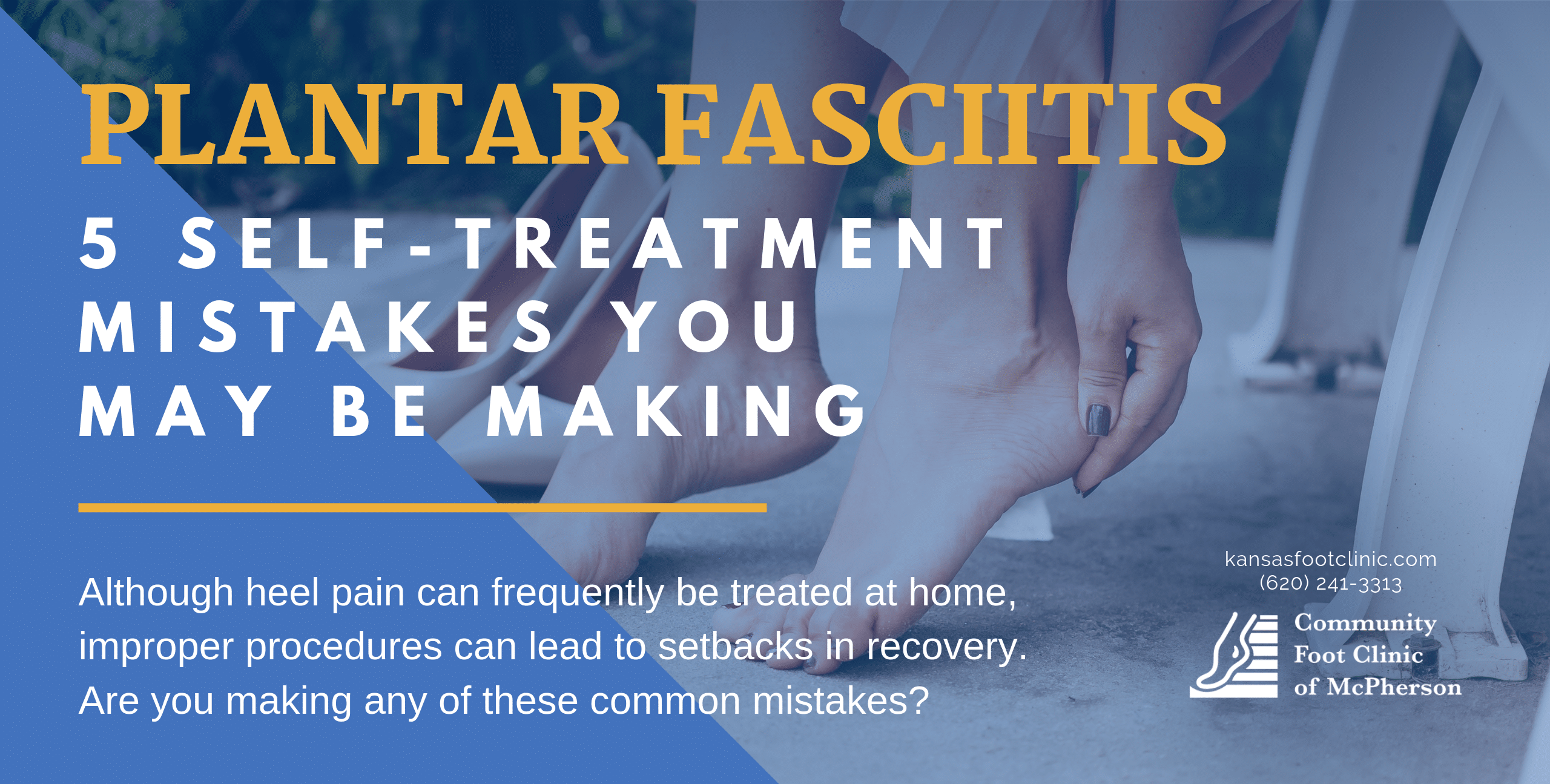Plantar Fasciitis: 5 Self-Treatment Mistakes You May Be Making
Debilitating heel pain, a telltale sign of plantar fasciitis, prompts many individuals to embark on a journey of self-treatment. However, this path is riddled with potential pitfalls that can hinder recovery and exacerbate the condition. In this blog, we will delve into five prevalent self-treatment mistakes surrounding plantar fasciitis, shedding light on how to sidestep these errors for a more effective recovery.
Misdiagnosis
The first and crucial pitfall in the realm of plantar fasciitis self-treatment is misdiagnosis. Given the similarity of symptoms with other foot conditions, individuals often find themselves on the wrong treatment trajectory. Seeking the expertise of Dr. Timson is essential for a precise diagnosis. Tailoring a treatment plan to the specific characteristics of plantar fasciitis significantly enhances the likelihood of successful recovery.
Misuse (Or Overuse) of Ice
Ice, a staple in inflammation management, can be a double-edged sword when used incorrectly. Overuse or improper application of ice can lead to complications, including frostbite. Adhering to proper guidelines for icing, such as limiting the duration and using a barrier between the ice and the skin, is crucial. When in doubt, consulting with our experienced team ensures that the benefits of icing are maximized without inadvertently causing harm.

Using Painkillers to Cheat on Rest
Painkillers offer temporary relief but should not be seen as a shortcut to circumvent the essential element of rest in plantar fasciitis recovery. Relying solely on painkillers masks the pain without addressing the root cause, leading individuals to inadvertently exacerbate the condition by pushing through activities. Prioritizing adequate rest, allowing the body the time it needs to heal, is paramount for sustained recovery.
The Right Treatment at the Wrong Time
Precision in timing is a critical aspect of effective plantar fasciitis treatment. While individuals may implement the correct treatment, doing so at an inopportune stage can impede progress. For instance, engaging in aggressive stretching during the acute phase of inflammation may worsen the condition. A nuanced understanding of the different phases of plantar fasciitis ensures that treatments are tailored to each stage, maximizing their efficacy.
Inconsistent Treatment and Rehab
Consistency is the linchpin of successful plantar fasciitis recovery. Unfortunately, many individuals fall prey to inconsistency in their treatment and rehabilitation efforts. Skipping prescribed exercises, neglecting recommended stretches, or inconsistently using supportive footwear can hinder progress. A structured and committed approach to the treatment plan, coupled with adherence to recommended lifestyle modifications, is essential for overcoming the challenges posed by plantar fasciitis.
Stop Making Mistakes, Come See Us
In the complex landscape of plantar fasciitis self-treatment, a reassessment of approaches is imperative. Seeking professional guidance, maintaining consistency in the treatment plan, and recognizing the significance of rest are pivotal steps toward an effective recovery.
By avoiding these common self-treatment mistakes, individuals can pave the way for healthier, pain-free feet and a restored quality of life. If you or someone you know have been suffering from heel pain due to plantar fasciitis, don’t rely on self-help treatments anymore. Contact our office to schedule an appointment with our seasoned team and experience healing and relief! Let us help you get back on your feet, pain-free!
McPherson Office
316 W. 4th Street
McPherson, KS 67460
P: (620) 241-3313
F: (620) 241-6967
© Community Foot Clinic of McPherson. All Rights Reserved.
Privacy Policy | Terms & Conditions
Web Design by CP Solutions
Marketed by VMD Services
